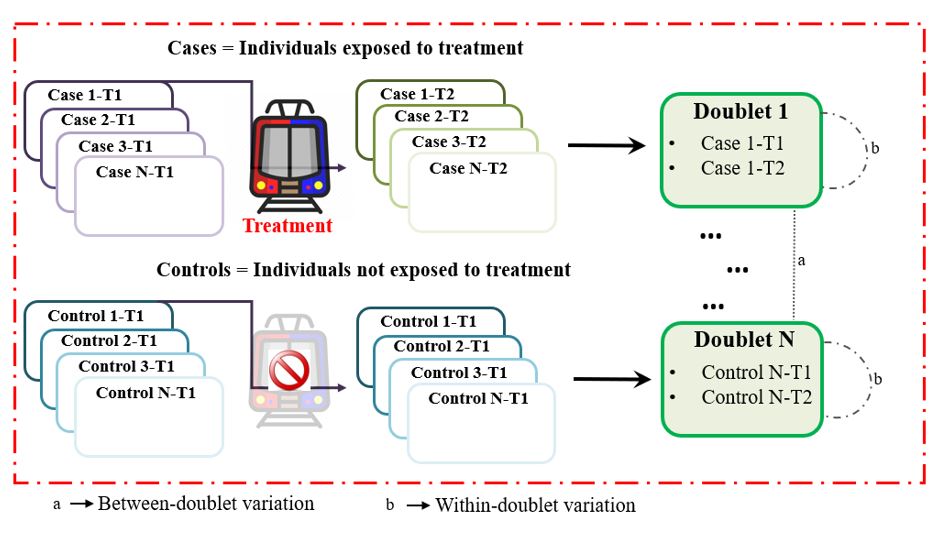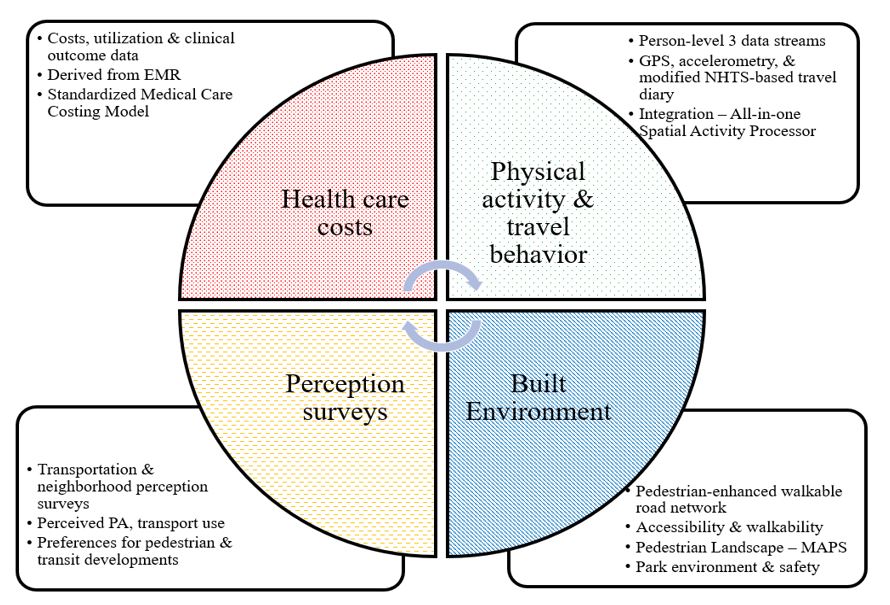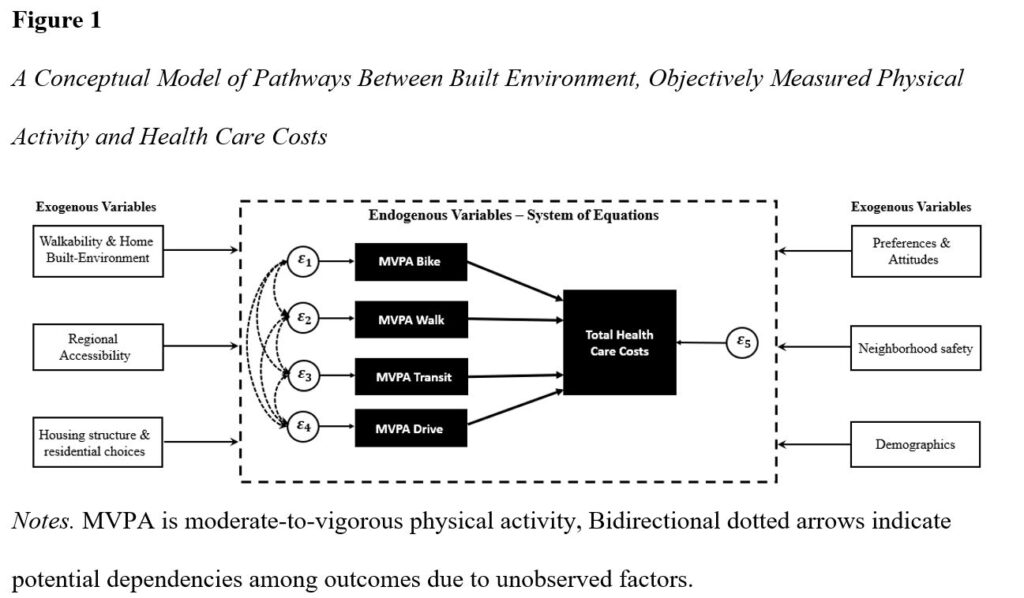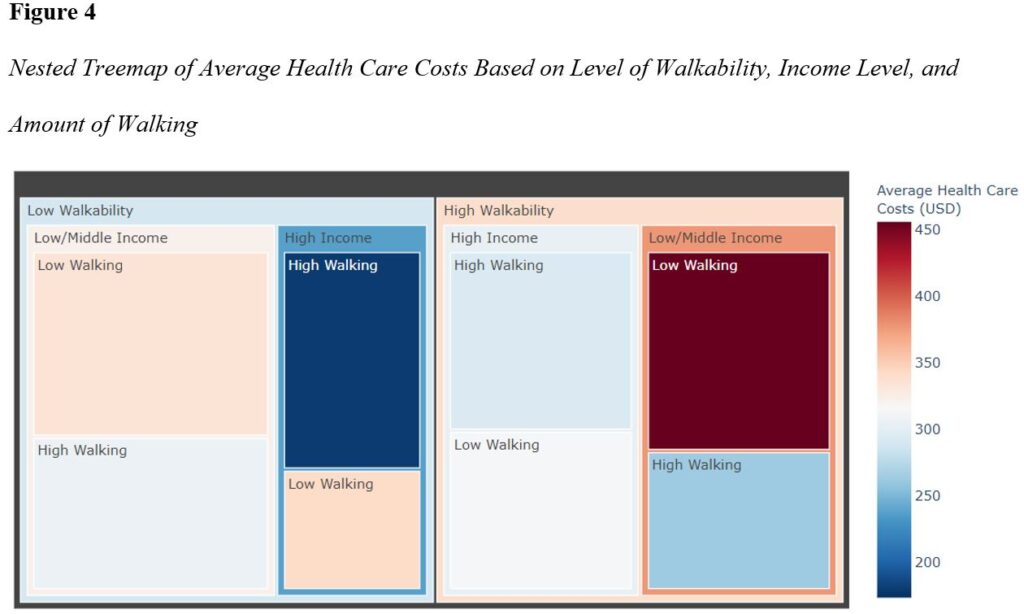Active Travel & Health Effects of Light Rail Transit
No research to date has causally linked built environment data with health care costs derived from clinically assessed health outcomes within the framework of longitudinal intervention design. In this project, we examined the impact of light rail transit (LRT) line intervention on health care costs after controlling for mode-specific objectively assessed moderate-to-vigorous physical activity (MVPA), participant-level neighborhood environmental measures, demographics, attitudinal predispositions, and residential choices.
Based on a natural experiment related to a new LRT line in Portland – hundreds of individuals divided into treatment and control groups were prospectively followed during the pre- and post-intervention periods. For each individual, we harness high-resolution data on Electronic Medical Record (EMR) based health care costs, mode-specific MVPA, survey-based travel behavior, attitudinal/perception information, and objectively assessed built environment measures. Simulation-assisted longitudinal grouped random parameter models are developed to gain more accurate insights into the effects of LRT line intervention.
Regarding the “average effect” of the LRT line intervention, no statistically significant reductions in health care costs were observed for the treated individuals over time. However, substantial heterogeneity was observed not only in the magnitude of effects but its direction as well after controlling for the within- and between-individual variations. For a subgroup of treated individuals, the LRT line opening decreased health care costs over time relative to the control group. Further comparative analysis based on the findings of heterogeneity-based models revealed that the effect of LRT intervention for the treated individuals differed by individual characteristics, attitudes/perceptions, and neighborhood level environmental features.
The longitudinal study revealed the presence of significant effect modifiers and distinct subgroup structures in the data related to the effects of LRT line intervention on health care costs. Besides, the analysis highlights the severe implications of ignoring unobserved heterogeneity in the context of transportation program evaluation.


In a separate study, we conceptualized the entire pathway from built environment to health – linking objectively-assessed built environment with mode-specific active travel and health care costs in a cross-sectional setting. Accounting for complex direct and indirect pathways within the framework of a joint endogenous structural model, our analysis showed a significant reduction in health care costs due to greater active travel. A one-unit increase in walkability index was associated with a substantial 6.48% reduction in health care costs.


Publications:
Wali, B., Frank, L. D., Young, D. R., Meenan, R. T., Saelens, B. E., Dickerson, J. F., & Fortmann, S. P. (2022). Causal evaluation of the health effects of light rail line: A natural experiment. Journal of Transport & Health, 24, 101292.
Wali, B., Frank, L., Young, D., Saelens, B., Meenan, R., Dickerson, J., Keast, E., Kuntz, J., Fortmann, S. (2021) Pathways from Built Environment to Health Care Costs: Linking Objectively Measured Built Environment with Physical Activity and Health Care Costs. (revision submitted).
Wali, B., Frank, L., Young, D., Saelens, B., Meenan, R., Dickerson, J., Fortmann, S. (2021). Associations of Walkability, Regional and Transit Accessibility Around Home and Workplace with Active and Sedentary Travel (under internal-review).
Wali, B., Frank, L., Young, D., Saelens, B., Meenan, R., Dickerson, J., Fortmann, S. (2021). Interactive Associations of Built Environment Around Home and Workplace with Active Travel. (In preparation).
Major Contributors:
Lawrence D. Frank, Ph.D. Professor, Urban Studies & Planning, UC San Diego;
Stephen P. Fortmann, Ph.D. Distinguished Investigator & Senior Science Director, Center for Health Research, Kaiser Permanente Northwest;
Deborah R. Young, Ph.D. Director, Division of Behavioral Research, Kaiser Permanente Research, Southern California;
Brian E. Saelens, Ph.D. Professor, University of Washington;
Richard T. Meenan, Ph.D, Investigator, Kaiser Permanente Northwest;
John F. Dickerson, Ph.D. Investigator, Kaiser Permanente Northwest.
The work and the research papers is part of work on the project Health & Economic Effects of Light Rail Lines: A Natural Experiment conducted by Urban Design 4 Health, Inc., in collaboration with Kaiser Permanente Northwest and funded by the U.S. National Institutes of Health.